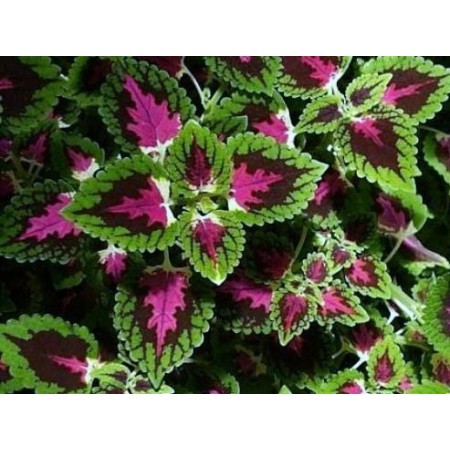Coleus cultivation

It is difficult to find among the variety of indoor plants a deciduous flower that would be more beautiful than coleus. This representative of the flora has an incredible color of leaves - a combination of green, purple, yellow and other shades gives a breathtaking effect. Accordingly, there are a lot of gardeners who decide to grow Coleus at home. And in the presented material we will try to figure out how to properly care for it, ensuring the growth of this houseplant for several consecutive seasons.
Choosing the right place in the house
Like other types of plants with variegated color of leaves, coleus needs a large amount of ultraviolet radiation. The brighter the paint, the more light he needs. However, exposure to direct sunlight can leave burns on the plant, which you can hardly get rid of. Accordingly, it is better for him to choose a place in the house in the immediate vicinity of the windows, but also not to forget about the protection in the form of curtains.
With the onset of winter colds and the heating season, it is better to remove the flowerpot with coleus from places where there are artificial sources of heat. Batteries and radiators quickly dry the air, which can also damage the flower.
Humidity, temperature and watering
Coleus is very fond of humid, but not oversaturated with liquid air. In summer, he needs plenty of water, so here you can not do without additional procedures for moisturizing leaves from the spray gun. Baths with water installed next to the pot will not be superfluous - so the flower can be saturated with the necessary substances.
In order not to worry about additional watering, it is necessary to maintain an optimum temperature for it in a room with a coleus. The most suitable places for it would be premises where in summer the air temperature does not rise above 22 degrees, and in winter - does not drop below 18 degrees.
As for watering, moisten the soil in the pot after the earthen lump begins to dry. It is also not necessary to fill the plant, and it is always recommended to ensure that excess moisture leaves the ground. This nuance is solved by prudent creation of a drainage layer or manual removal of excess fluid after each irrigation.
In winter, when the coleus falls into a state of rest, moisten the soil in the pot should be no more than once a day or two. With the onset of the flowering season, the amount of liquid introduced into the earth increases several times. To do this, it is better to use standing water, slightly heated and previously purified from any harmful impurities. Hard water from the tap is able to infect coleus with various diseases, from which the flower will quickly lose all leaves and is unlikely to recover.